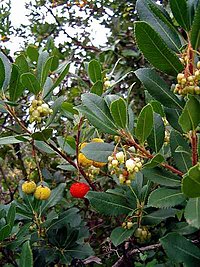
Photo from wikipedia
The International Union for Conservation of Nature's Red List of Threatened Species (IUCN Red List) is the world's most comprehensive information source on the global conservation status of species. Governmental… Click to show full abstract
The International Union for Conservation of Nature's Red List of Threatened Species (IUCN Red List) is the world's most comprehensive information source on the global conservation status of species. Governmental agencies and conservation organizations increasingly rely on IUCN Red List assessments to develop conservation policies and priorities. Funding agencies use the assessments as evaluation criteria, and researchers use meta‐analysis of red‐list data to address fundamental and applied conservation science questions. However, the circa 143,000 IUCN assessments represent a fraction of the world's biodiversity and are biased in regional and organismal coverage. These biases may affect conservation priorities, funding, and uses of these data to understand global patterns. Isolated oceanic islands are characterized by high endemicity, but the unique biodiversity of many islands is experiencing high extinction rates. The archipelago of Hawaii has one of the highest levels of endemism of any floristic region; 90% of its 1367 native vascular plant taxa are classified as endemic. We used the IUCN's assessment of the complete single‐island endemic (SIE) vascular plant flora of Kauai, Hawaii, to assess the proportion and drivers of decline of threatened plants in an oceanic island setting. We compared the IUCN assessments with federal, state, and other local assessments of Kauai species or taxa of conservation concern. Finally, we conducted a preliminary assessment for all 1044 native vascular plants of Hawaii based on IUCN criterion B by estimating area of occupancy, extent of occurrence, and number of locations to determine whether the pattern found for the SIE vascular flora of Kauai is comparable to the native vascular flora of the Hawaiian Islands. We compared our results with patterns observed for assessments of other floras. According to IUCN, 256 SIE vascular plant taxa are threatened with extinction and 5% are already extinct. This is the highest extinction risk reported for any flora to date. The preliminary assessment of the native vascular flora of Hawaii showed that 72% (753 taxa) is threatened. The flora of Hawaii may be one of the world's most threatened; thus, increased and novel conservation measures in the state and on other remote oceanic islands are urgently needed.
Journal Title: Conservation Biology
Year Published: 2022
Link to full text (if available)
Share on Social Media: Sign Up to like & get
recommendations!